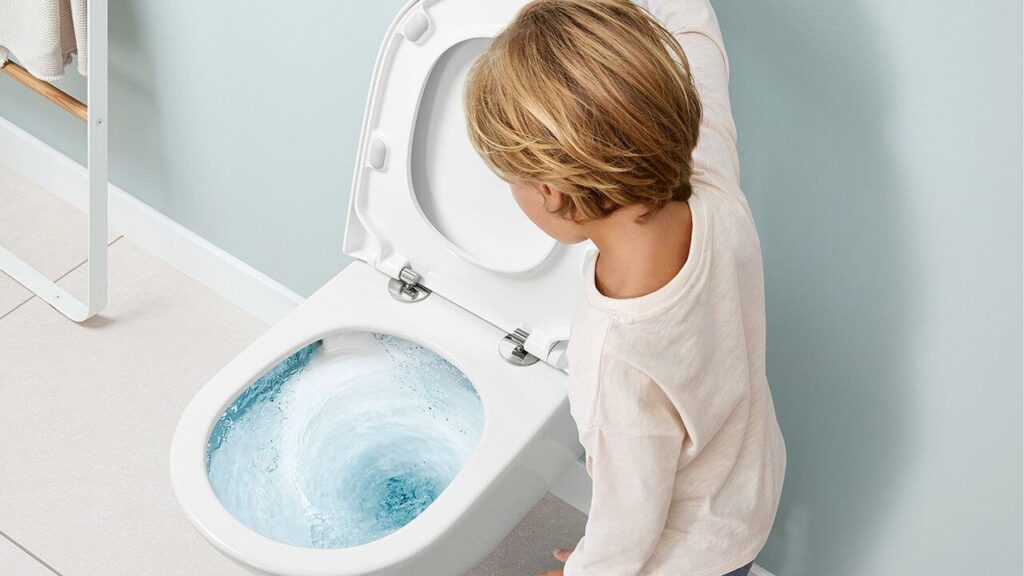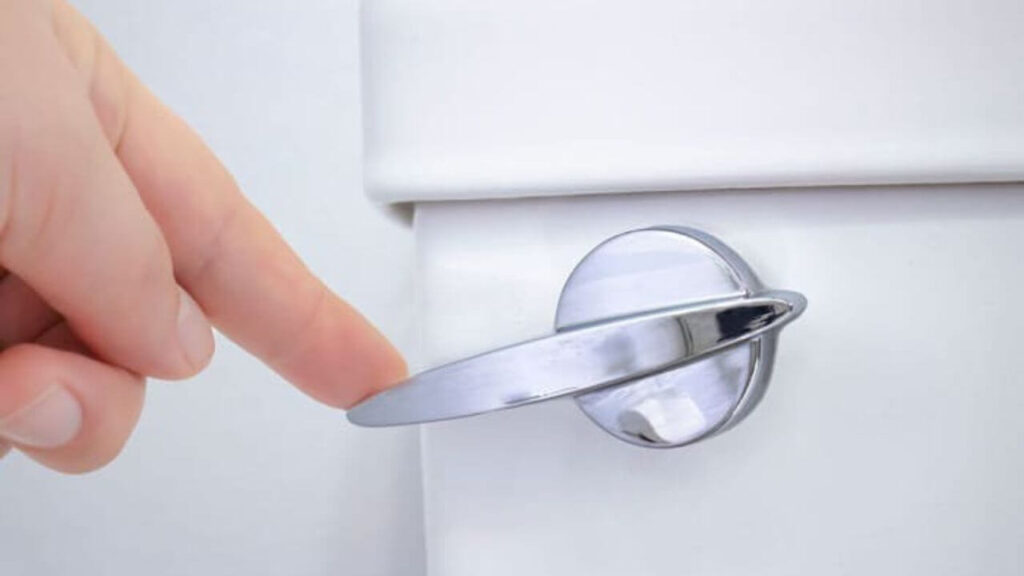Once as a curious homeowner, I asked myself a question – Do Toilets Use Electricity? As I pondered this complex question, I realized there was only one way to find out: by digging into the science behind it.
So, with a determined heart, I set out to answer this age-old question. But what I discovered on my journey was far more astonishing than I ever expected.
Read on to discover how many surprising things I have found during this journey.
Do Toilets Use Electricity?

Generally, toilets operate without the need for electricity. However, there are certain exceptions, such as pressure-assisted toilets and heated toilet seats, which require electricity for their functionality.
If you need electricity to flush a toilet, here you need some guidance. Most toilets don’t need electricity to function.
In general, toilets rely on the power of water for their operation. However, there are certain types of toilets that do require electricity.
The pressure-assisted toilet is a prominent example in this category. These toilets utilize a small electric pump to facilitate faster water movement into the bowl.
This feature can be beneficial in situations where there is high toilet usage or if the water pressure in your home is low.
Based on my ten years of plumbing experience, I have encountered these electricity-dependent toilets and witnessed their advantages firsthand.
Another type of toilet that may require electricity is the heated toilet seat. These seats use a small heating element to keep their seat warm.
While this isn’t necessary for the toilet to function, it can be a nice feature, especially in cold weather.
Finally, some toilets have features that require electricity, such as a night light or a bidet. These features are optional for the toilet to work, but they can be convenient.
How Much Electricity Does A Toilet Flush Use?
For people who own a pressure-assisted toilet or heated toilet seat, now you must be thinking about how much electricity your toilet uses while flushing, right? I have done some good research on it so you can get your answer.
A single toilet flush uses anywhere from 1.6 to 7 gallons of water. Depending on the model of your toilet, that flush could use as little as 2 watts of power or as much as 60 watts. So how much does that translate to your monthly electricity bill?
Toilet flushing accounts for about 2% of your total water usage, so if you’re using an average of 100 gallons of water daily, that’s 2 gallons just for flushing.
If your toilet uses 2 watts of power per flush, that’s four watt-hours per day or 120 watt-hours per month.
At an average price of 12 cents per kilowatt-hour, that’s about $0.14 monthly to flush your toilet. If your toilet uses more power, say 60 watts per flush, you’re using 360 watt-hours per month, or about $0.43.
Even though it may seem insignificant, the power consumption of toilets can add up, especially if you have multiple units in your home. The good news is that there are measures you can take to reduce toilet power usage. If your toilet was manufactured before 1994, it likely consumes more water than necessary.
To address this, toilets produced after that date must adhere to a maximum flush volume of 1.6 gallons. You can further save water and cut costs by installing a low-flow toilet, which uses even less water per flush.
In addition, ensuring proper toilet maintenance is another way to conserve power. A leaking toilet not only wastes a significant amount of water but can also cause damage to your floors and ceilings.
Thus, timely repairs and maintenance are essential for both conservation and preventing potential structural issues.
Fixing a leaky toilet can save you hundreds of gallons of water per year and save you money on your water bill.
So, how much electricity does a toilet flush use?
The amount of electricity consumed during a toilet flush is typically minimal and varies depending on the specific toilet model.
However, if you have multiple toilets in your home or an older toilet that uses more water, it can add up. There are ways to save water and power, though, so it’s worth taking a closer look at your toilet.
Also Read:
How Much Does It Cost To Flush A Toilet
Does Flushing The Toilet Waste Energy?
We all know that flushing the toilet wastes water, but does it also waste energy? The answer may surprise you.
Toilets use a lot of water – up to 7 gallons per flush. That’s a lot of water that has to be heated (or cooled if you have a tankless toilet) every time you flush.
And according to the U.S. Environmental Protection Agency, toilets account for nearly 30% of all indoor water use. So, yes, flushing the toilet wastes energy.
But there are ways to reduce the amount of energy your toilet uses. As I have mentioned above, If your toilet was manufactured before 1994, it probably uses 3.5 gallons of water per flush.
Newer toilets use 1.6 gallons of water per flush or less. If you have an older toilet, you can save water and energy by replacing it with a newer, more efficient model.
You can also save water and energy by ensuring that only human waste and toilet paper go down the toilet. Flushing other items like paper towels and feminine hygiene products can clog the toilet and wastewater.
If you have a tankless toilet, you can save energy by ensuring the cold water line is the only one connected to the toilet.
Connecting the hot water line to the toilet will cause the toilet to use energy to heat the water every time it’s flushed.
Finally, if you have a dual-flush toilet, you can save water and energy by using the half-flush option for liquid waste and the full-flush option for solid waste. Flushing the toilet wastes energy, but there are ways to minimize the amount of energy your toilet uses.
Replacing an older toilet with a newer, more efficient model is the best way to save water and energy.
But, even if you can’t replace your toilet, you can still save water and energy by making sure that only human waste and toilet paper go down the toilet and using the half-flush option on dual-flush toilets.
How Many Times Can You Flush A Toilet Without Power

We often take for granted the conveniences that modern life affords us. One of those conveniences is the flush toilet.
When the power goes out, however, we may be unable to take flushing for granted anymore. So, how many times can you flush a toilet without power?
The answer to this question depends on a few factors, such as the size of your tank and the amount of water in it.
A standard tank holds about 1.6 gallons (6 liters) of water and takes about 1.6 gallons (6 liters) of water to fill it. This means you can flush your toilet about four times before emptying the tank.
Of course, your mileage may vary. If your tank is more significant or you have a low-flow toilet, you may be able to flush more times. Conversely, if your tank is smaller or you have a high-flow toilet, you can flush fewer times.
In any case, it’s always a good idea to have a backup plan for when the power goes out. You can use a hand pump to bring water up from the ground if you have a well.
If you live in an apartment, see if your building has a generator to power the water pump. And, of course, you can always use the old-fashioned bucket method.
If the Power Goes Out, Will the Toilet Flush?
Did you know that your toilet will not flush if the power goes out, your toilet will not flush? That’s right, without power, your toilet will not work. So, if you have a power outage, you must be prepared.
Here are some tips on what to do if the power goes out and you need to use the toilet:
1. If possible, use a flashlight to see in the dark. This will help you avoid any accidents.
2. If you have a manual toilet, you can still flush it without power. Pour a bucket of water into the bowl and flush as usual.
3. If you have an electric toilet, you must find an alternative way to flush it. One option is to pour a bucket of water into the bowl and flush as usual.
4. If you cannot flush the toilet, you can always use the “bathroom bucket method.” This involves using a bucket as a toilet.
Line the bucket with a garbage bag, and then do your business. When finished, tie up the garbage bag and dispose of it properly.
5. If the power is out for an extended period, consider using a porta-potty. This is a portable toilet that can be used in situations where there is no running water.
So, there you have it. These are some tips on what to do if the power goes out and you need to use the toilet. Be prepared and be safe!
Bottom Line
In conclusion, although flushing the toilet does not require electricity, some toilets may heat the water and make the flush more efficient. In my opinion, it is best to check with your toilet manufacturer to determine if your toilet uses electricity.
